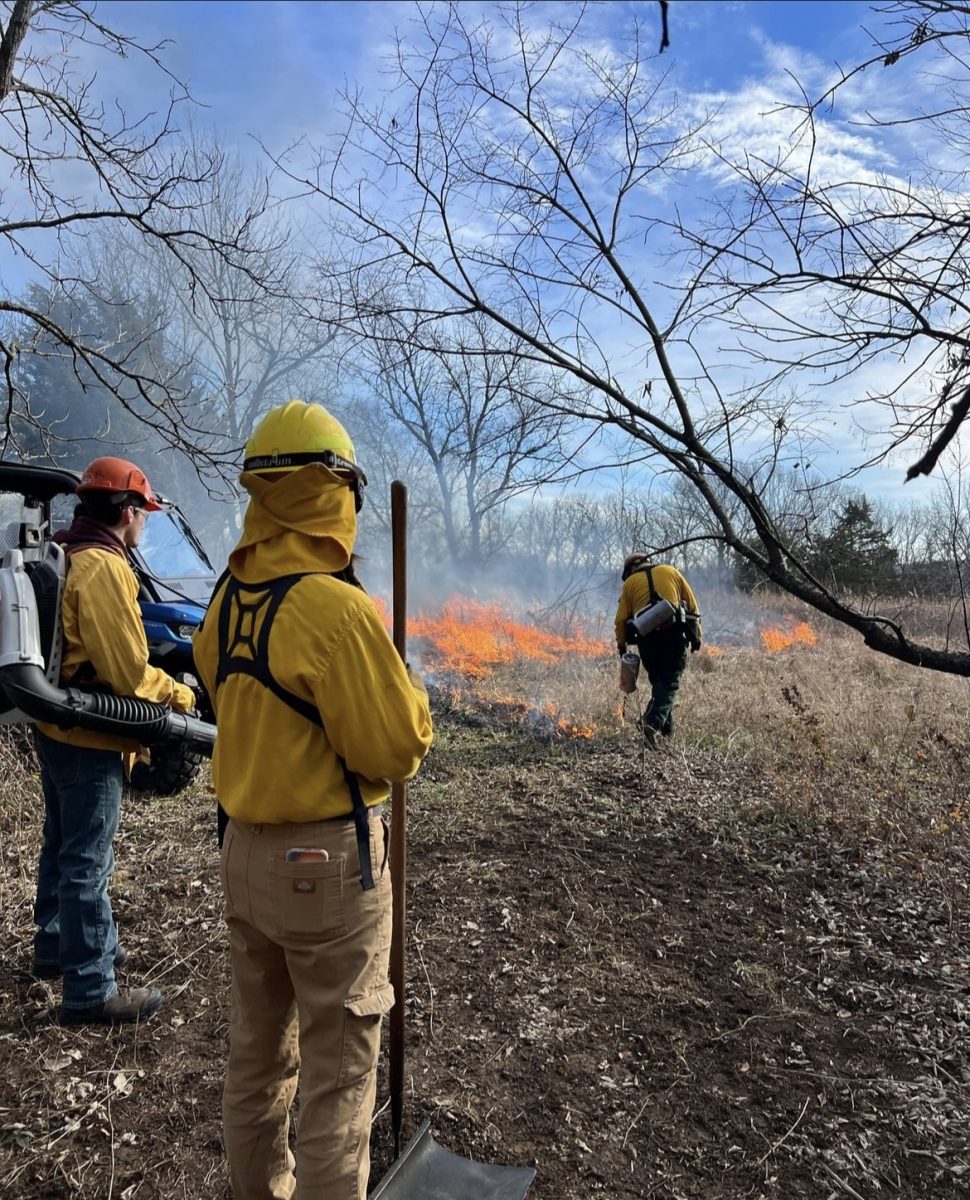Blazing through training, some students in UMKC’s Earth and Environmental Science department uncovered the latest hotspot for all things ecology: gaining a certification in prescribed burning.
Madegan Morrison, a senior majoring in Earth and Environmental Science, is one of the fiery few who took time out of her usual class and work schedule to get certified.
“In my free time, I enjoy learning this sort of stuff,” Morrison said. “I’m aiming to go into biology or ecology research in some way, and land management practices are adjacent to that.”
Prescribed or controlled burning is a tool for regenerative land stewardship that involves planning fires under specific weather conditions to clear away invasive species for the regrowth of more nutrient-dense, native plants among other environmental benefits.
Native grasses and plants in the Missouri region are adapted to fire and survive by having deep root systems, allowing them to have compensatory growth after they are burned or grazed.
“For a long time in the U.S., we convinced everybody that fire was bad,” said Dr. Alison Graettinger, an associate professor of Earth and Environmental Sciences at UMKC. “That’s a really hard mentality to rewrite – to get people to think about why fire is part of the natural environment.”
In Native American cultures, fire was a tool used to create conditions to benefit farming and hunting.
“Fire has been an environmental shaper for thousands of years in this region,” Morrison said. “Colonizers suppressed fire when they arrived because they didn’t want their stuff to burn down. They wanted their cattle to graze the land, but because that fire wasn’t there to maintain that ecosystem, we have invasive species entering into the last remaining prairie that we have.”
Today, less than one-half of 1% of native prairies remain in Missouri. The prairie once covered at least 15 million acres in Missouri, one-third of the state, up until statehood in 1821, according to the Missouri Prairie Foundation.

“It’s tragic to me that the Missouri prairie ecosystem is almost obsolete,” said Elena Payne, a senior studying Earth and Environmental Science, who is scheduled to complete her fire training this semester. “It seems like it needs some first aid, in simple words.”
To conduct a controlled burn, a group of fire-certified people coordinate a time, place and type of burn for the specific topography of the land. Normally, landowners get fire-certified and use the help of land conservationists from the Missouri Department of Conservation to lead these burns on their own land.
For students, a fire certification can offer field experience and be a hireable skill to add to their resumes.
“A certification helps if you want to get a job on a burn team or if you want to work for a park, which I’d be interested in,” said Gavin Hysten, a fire-certified senior studying Earth and Environmental Science. “A lot of jobs want to see what you are interested in, and I’m interested in the restoration of the remnant prairies in Missouri.”
The enthusiasm for prescribed burning among these students reflects a growing recognition of the importance of protecting existing ecosystems and the environment.
“I would like to think it’s part of a larger wave of ecologically-minded living, where people pay more attention to what’s around them and are willing to live alongside healthy ecosystems,” Morrison said.
“Fire is just a tool and there’s a lot of other tools. Fire is not the only thing we can and should be doing, but it is intersectional with every single thing that we do, because our setting defines what we are capable of doing,” Morrison continued. “We are intrinsically connected to our environment, and the health of our environment affects our own health. We have an opportunity right now to take ownership over the future that we would like to see, or to let these issues continue and deal with the consequences.”
To learn more about local prescribed burning efforts, visit the websites for Kansas City WildLands, Missouri Department of Conservation and the Missouri Prairie Foundation.
To learn more about UMKC student organizations doing environmental work, visit the RooGroups pages for Environmental Student Council, Student Environmental Coalition and the Environmental Law Society.








